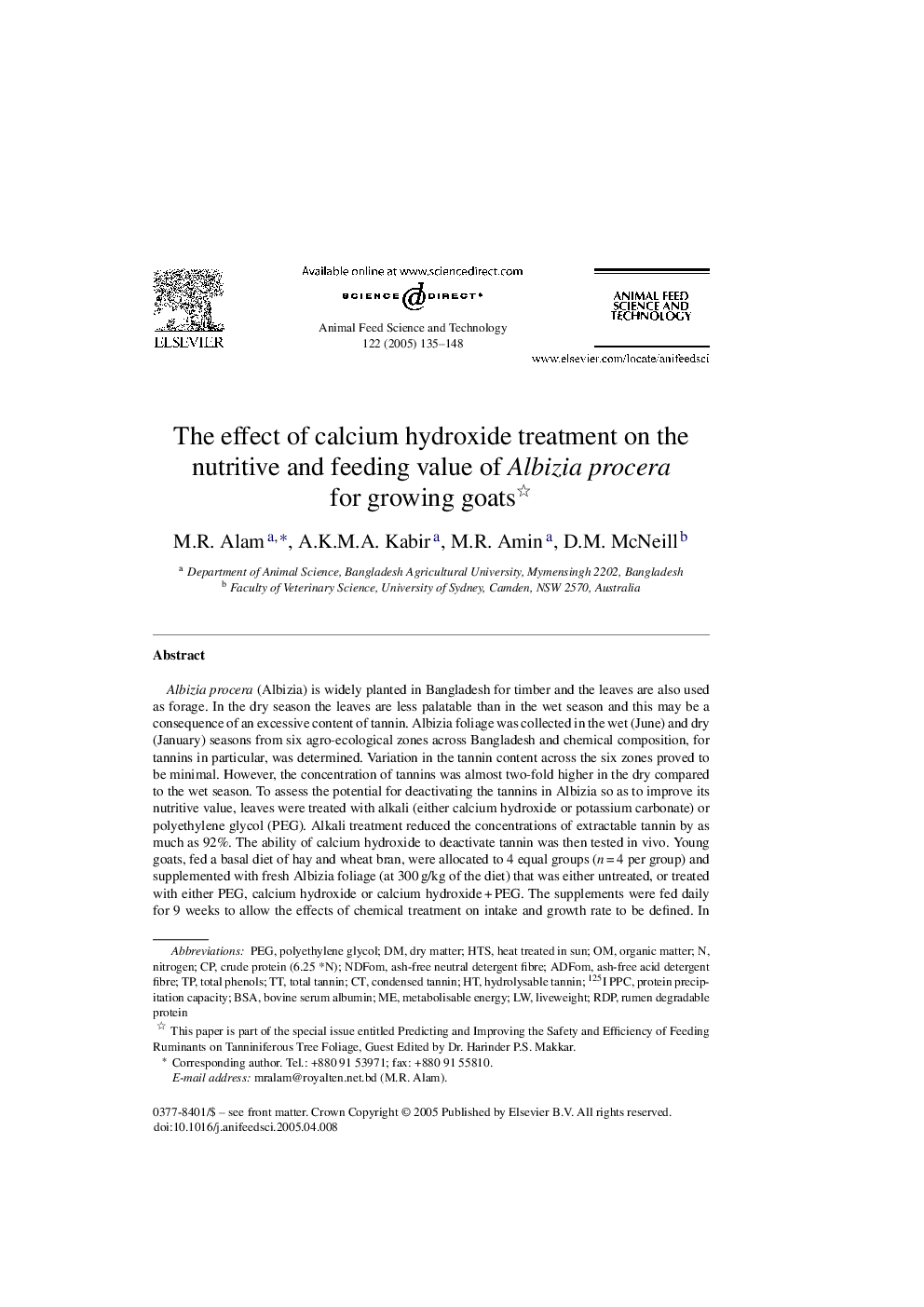| کد مقاله | کد نشریه | سال انتشار | مقاله انگلیسی | نسخه تمام متن |
|---|---|---|---|---|
| 8973686 | 1552509 | 2005 | 14 صفحه PDF | دانلود رایگان |
عنوان انگلیسی مقاله ISI
The effect of calcium hydroxide treatment on the nutritive and feeding value of Albizia procera for growing goats
دانلود مقاله + سفارش ترجمه
دانلود مقاله ISI انگلیسی
رایگان برای ایرانیان
کلمات کلیدی
ash-free neutral detergent fibreNDFomAlbizia proceraHTSRDPADFomBSA - BSAbovine serum albumin - آلبومین سرم گاوash-free acid detergent fibre - الیاف پاک کننده اسید اسید آزادmetabolisable energy - انرژی قابل متابولیسمTannins - تاننHydrolysable tannin - تانن HydrolysableCondensed tannin - تانن چگالAlkali treatment - درمان قلیاییPhenolics - فنولیکorganic matter - ماده آلیdry matter - ماده خشکNitrogen - نیتروژنLiveweight - وزن زندهRumen degradable protein - پروتئین قابل تجزیه استpolyethylene glycol - پلی اتیلن گلیکولPEG - پلیاتیلن گلیکول Total phenols - کل فنول ها
موضوعات مرتبط
علوم زیستی و بیوفناوری
علوم کشاورزی و بیولوژیک
علوم دامی و جانورشناسی
پیش نمایش صفحه اول مقاله

چکیده انگلیسی
Albizia procera (Albizia) is widely planted in Bangladesh for timber and the leaves are also used as forage. In the dry season the leaves are less palatable than in the wet season and this may be a consequence of an excessive content of tannin. Albizia foliage was collected in the wet (June) and dry (January) seasons from six agro-ecological zones across Bangladesh and chemical composition, for tannins in particular, was determined. Variation in the tannin content across the six zones proved to be minimal. However, the concentration of tannins was almost two-fold higher in the dry compared to the wet season. To assess the potential for deactivating the tannins in Albizia so as to improve its nutritive value, leaves were treated with alkali (either calcium hydroxide or potassium carbonate) or polyethylene glycol (PEG). Alkali treatment reduced the concentrations of extractable tannin by as much as 92%. The ability of calcium hydroxide to deactivate tannin was then tested in vivo. Young goats, fed a basal diet of hay and wheat bran, were allocated to 4 equal groups (n = 4 per group) and supplemented with fresh Albizia foliage (at 300 g/kg of the diet) that was either untreated, or treated with either PEG, calcium hydroxide or calcium hydroxide + PEG. The supplements were fed daily for 9 weeks to allow the effects of chemical treatment on intake and growth rate to be defined. In vivo digestibility, nitrogen (N) balance, and microbial N supply were measured over the 5th week. Intakes of feed dry matter (DM) and the digestibility of DM were similar across treatments (mean intake 32 g/(kg LW day), mean DM digestibility 0.63). However, both the PEG and the PEG + calcium hydroxide treatments, compared to the control and calcium hydroxide only treatments, increased N digestibility (0.72, 0.70 versus 0.60, 0.61), N retention (0.43, 0.48 mg N/mg versus 0.26, 0.27 mg N/mg N intake), and microbial N supply (23.7, 21.4 g/day versus 14.2, 12.4 g/day). These increases translated into a 35% improvement in growth rate (40, 36 g/day versus 26, 29 g/day). Calcium hydroxide alone did not improve the feeding value of Albizia. These data highlight the danger of assuming an assayable reduction in tannin, such as that observed in the calcium hydroxide treatment, will translate into an improvement in nutritive value and subsequent animal performance. Since the performance of the goats improved maximally when PEG was added to the calcium hydroxide-treated Albizia it was clear that the tannins were still as active as in the untreated Albizia. It was concluded that calcium hydroxide does not deactivate the tannins in Albizia.
ناشر
Database: Elsevier - ScienceDirect (ساینس دایرکت)
Journal: Animal Feed Science and Technology - Volume 122, Issues 1â2, 19 August 2005, Pages 135-148
Journal: Animal Feed Science and Technology - Volume 122, Issues 1â2, 19 August 2005, Pages 135-148
نویسندگان
M.R. Alam, A.K.M.A. Kabir, M.R. Amin, D.M. McNeill,